Best AMD motherboards in 2021
The best AMD motherboard forms the backbone of your killer AMD Ryzen gaming PC. Whether you're going for maximum frames with a Ryzen 9 5900X or a $400 budget build, the best AM4 mobos give you the flexibility to build the gaming PC that's right for you.
The first step on your journey to a new AMD gaming PC is to pick the best chipset for your needs. You have a few options here, as AMD has stuck with the same AM4 socket for a long time. The most relevant for gaming are the X570, B550, X470, and B450. Those are near-enough in descending order in both price and features, but there are a few exceptions to that rule.
Next, you'll need to look into the board itself. Performance-wise, there's not much in it even with the most expensive boards unless you plan on dabbling with a little CPU overclocking—even then, there is precious little headroom in the Ryzen CPUs. Regardless, you'll still want to strike the right balance of features, ports, and platform support before heading to the checkout.
Figure out how many M.2 and PCIe slots you'll need, along with how many USB ports you tend to use. It helps if you consider the scale of your build too. Is space no object? Then go with an ATX board. But if you're looking to create a mini Ryzen PC, you'll need a good mini-ITX motherboard. Thankfully there are some great options, and not only at the high end.
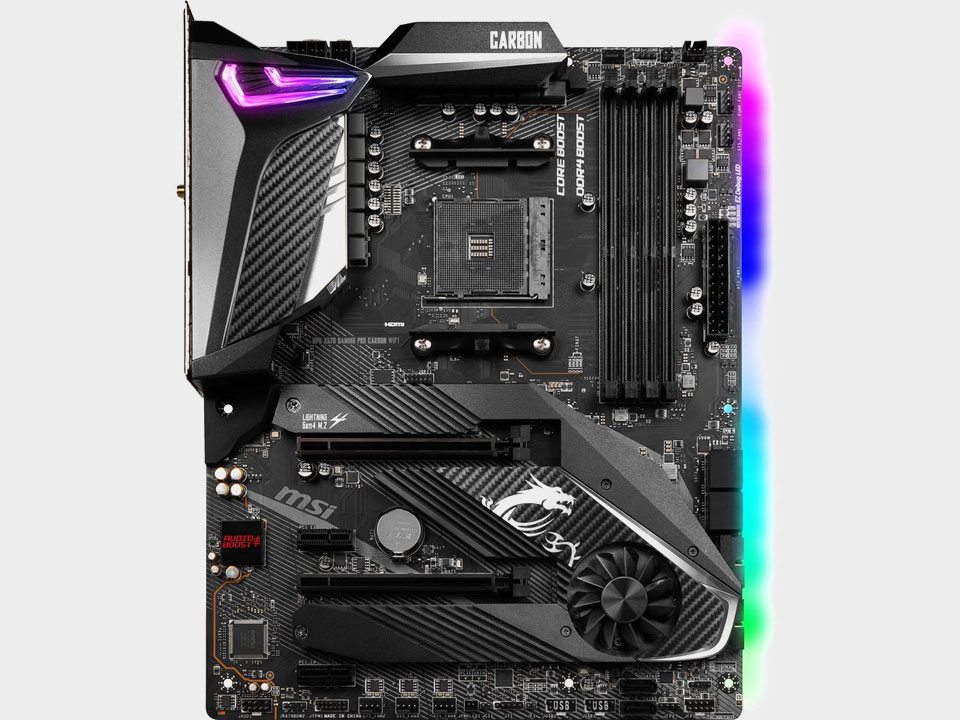
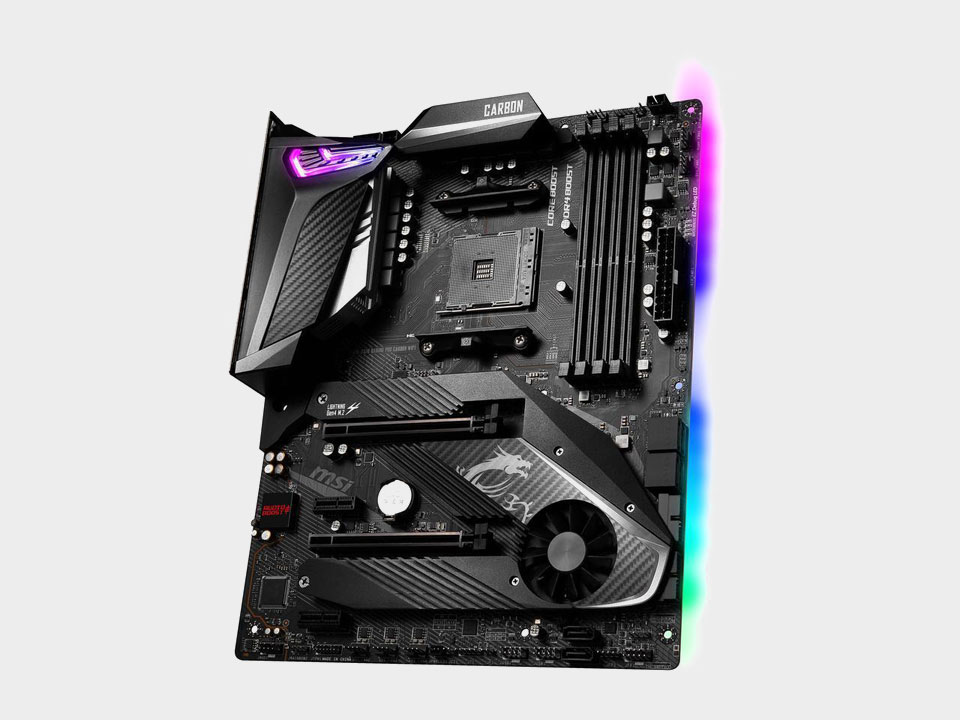
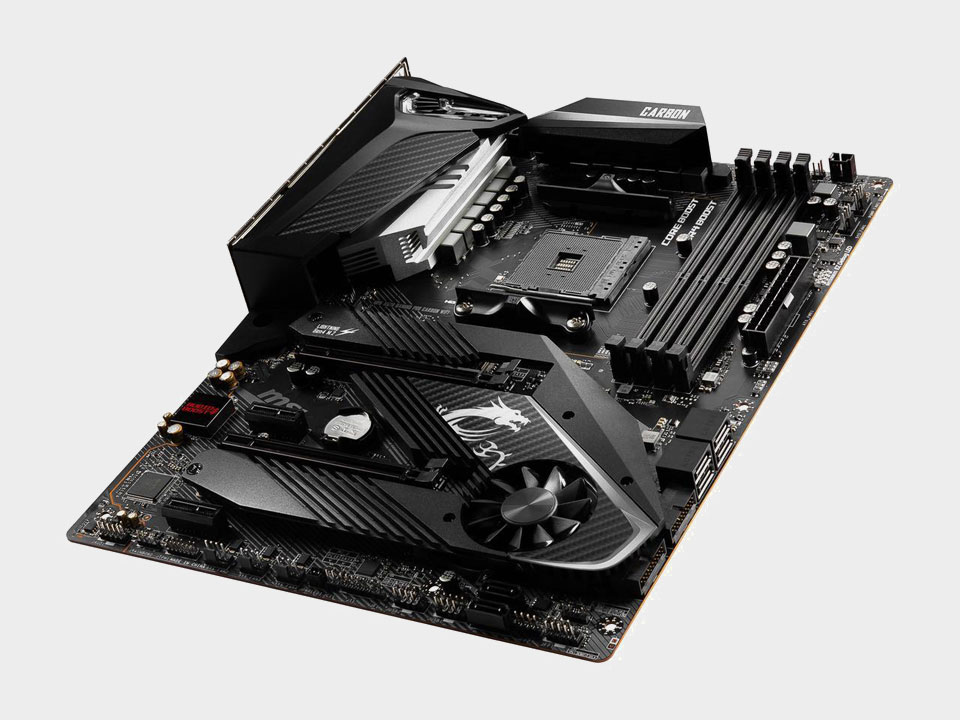
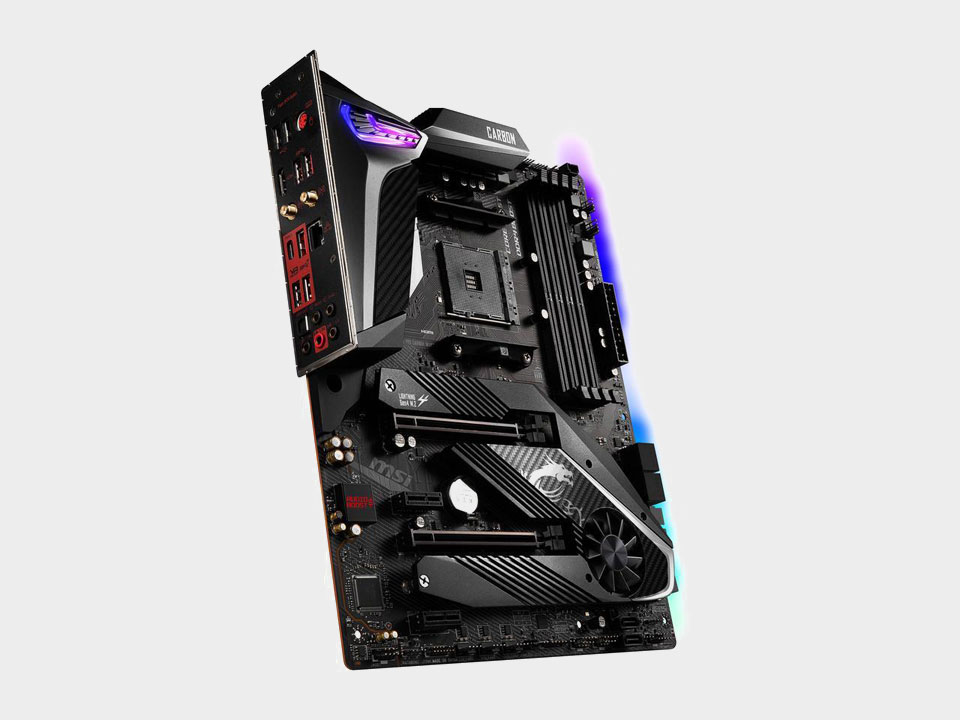
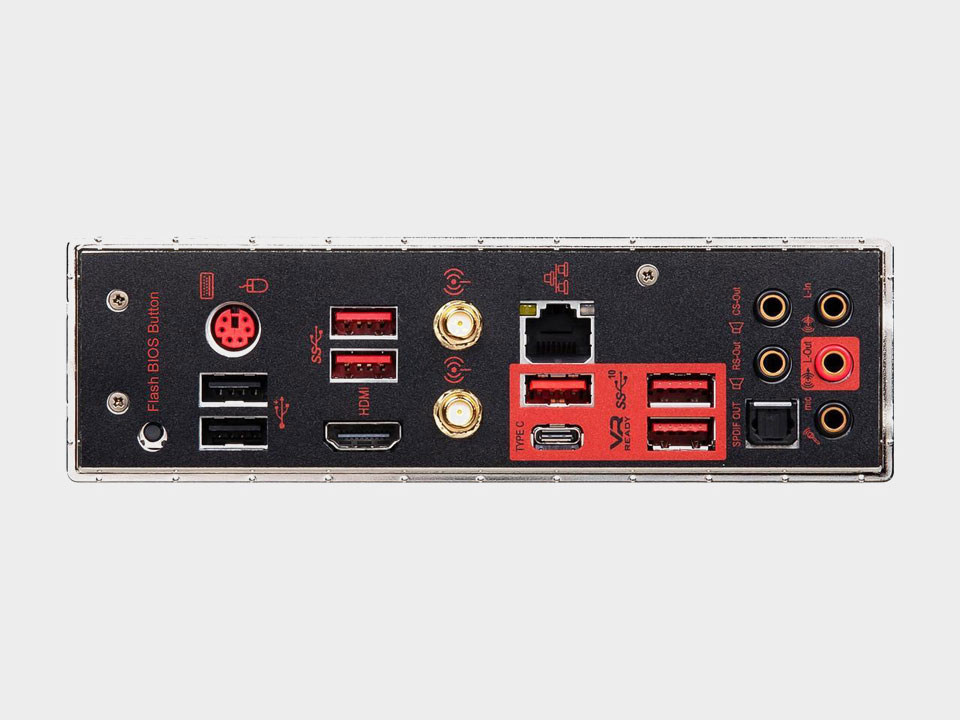
The MSI MPG X570 represents an amalgamation of bleeding-edge motherboard tech, built to help you get the most out of AMD's high-end Ryzen 5000 processors, such as the Ryzen 9 5900X or Ryzen 9 5950X. It has four DIMM slots that can handle speeds up to 4,400MHz (although there's not much point going beyond DDR4-4000) and two PCIe 4.0 M.2 slots—MSI's MPG X570 is all about getting the most out of the best components.
The rear I/O panel features seven USB Type-A ports for peripherals, as well as a single USB Type-C port for connectivity and high-speed data transfer. So you won't go without precious ports for at least, er, a week.
The MPG X570 supports Wi-Fi 6, and while that does necessitate a Wi-Fi 6 compatible router for the fastest speeds, it will also work with existing Wi-Fi 4/5 routers (formerly 802.11n and 802.11ac). Also of note is the HDMI port, which many X570 boards omit (not that we'd recommend using an AMD APU with integrated graphics in a high-end board like this).
The pair of M.2 slots each have dedicated heat shields and fans, and while this does help prevent potential thermal throttling, it makes installing or replacing them a more delicate process than with their more-exposed counterparts.
The MPG X570 features enough compatibility to get the most out of your hardware now and in the future, provided you're willing to pay a premium for it. While it's certainly an excellent motherboard, if you aren't already committed to a shopping list of top-of-the-line components, you may want to consider a slightly less expensive board for your needs. The MSI X570-A Pro omits some extras like Wi-Fi and the M.2 shields, but it still runs fine and costs nearly $100 less.
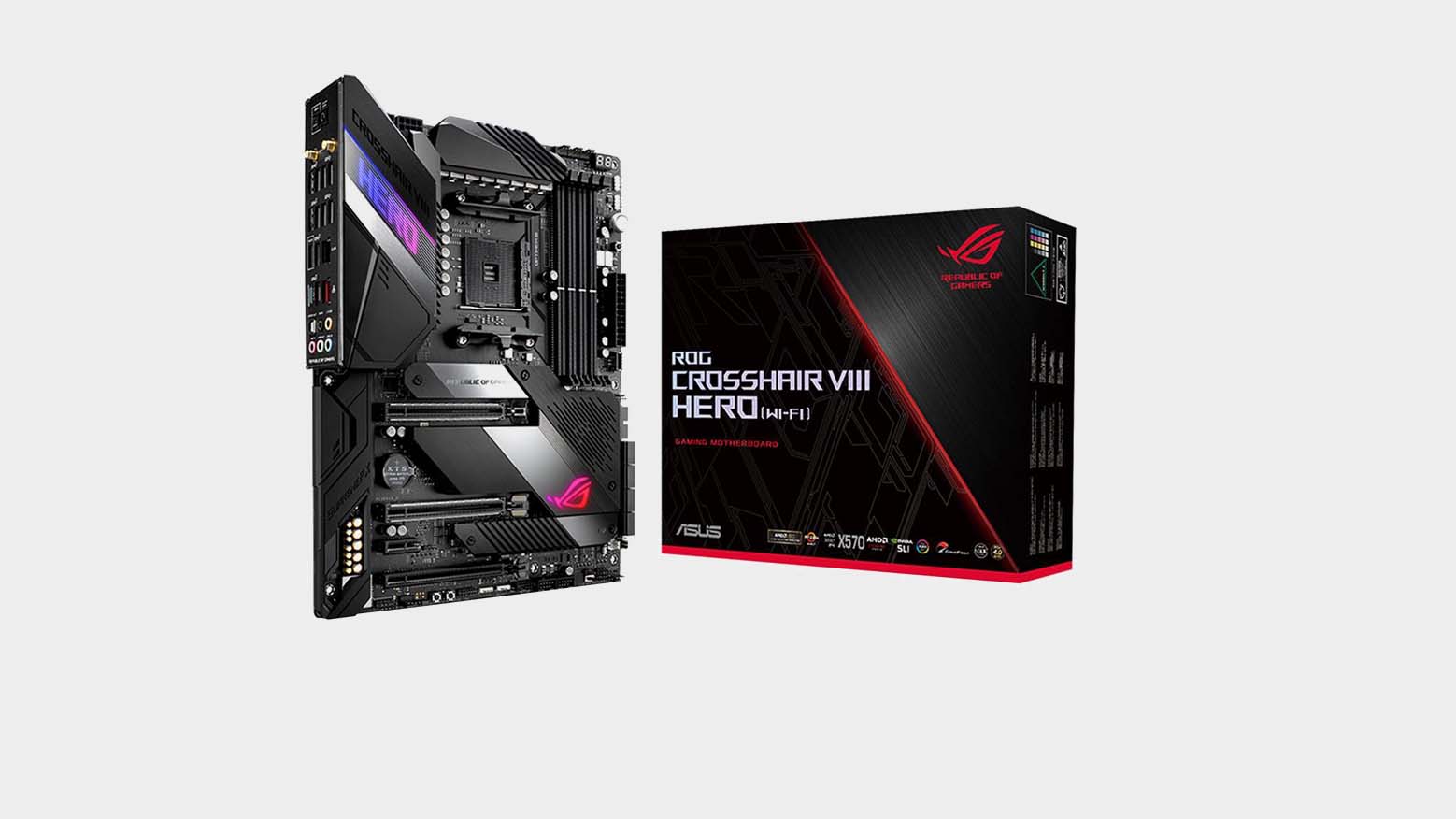
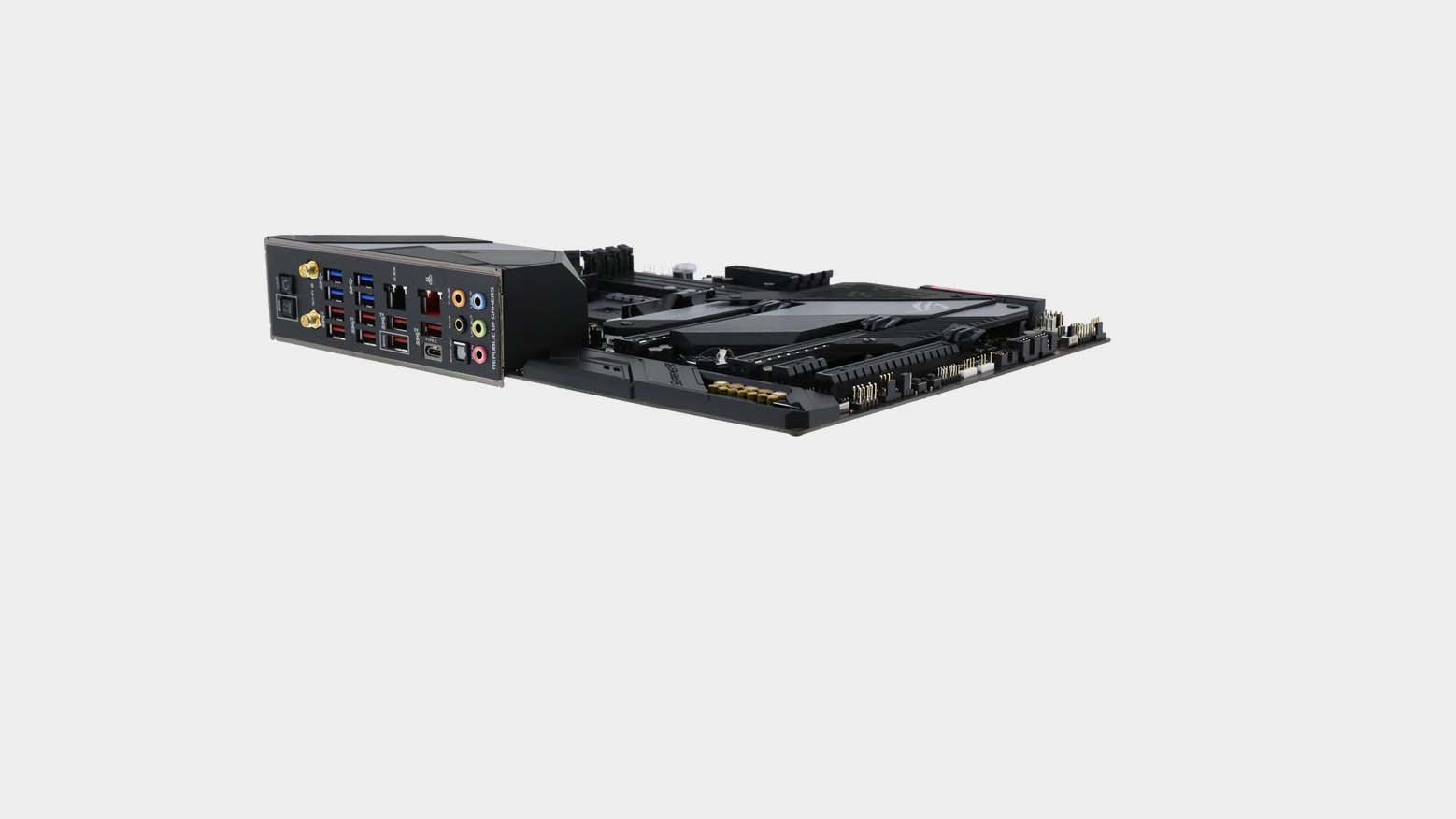
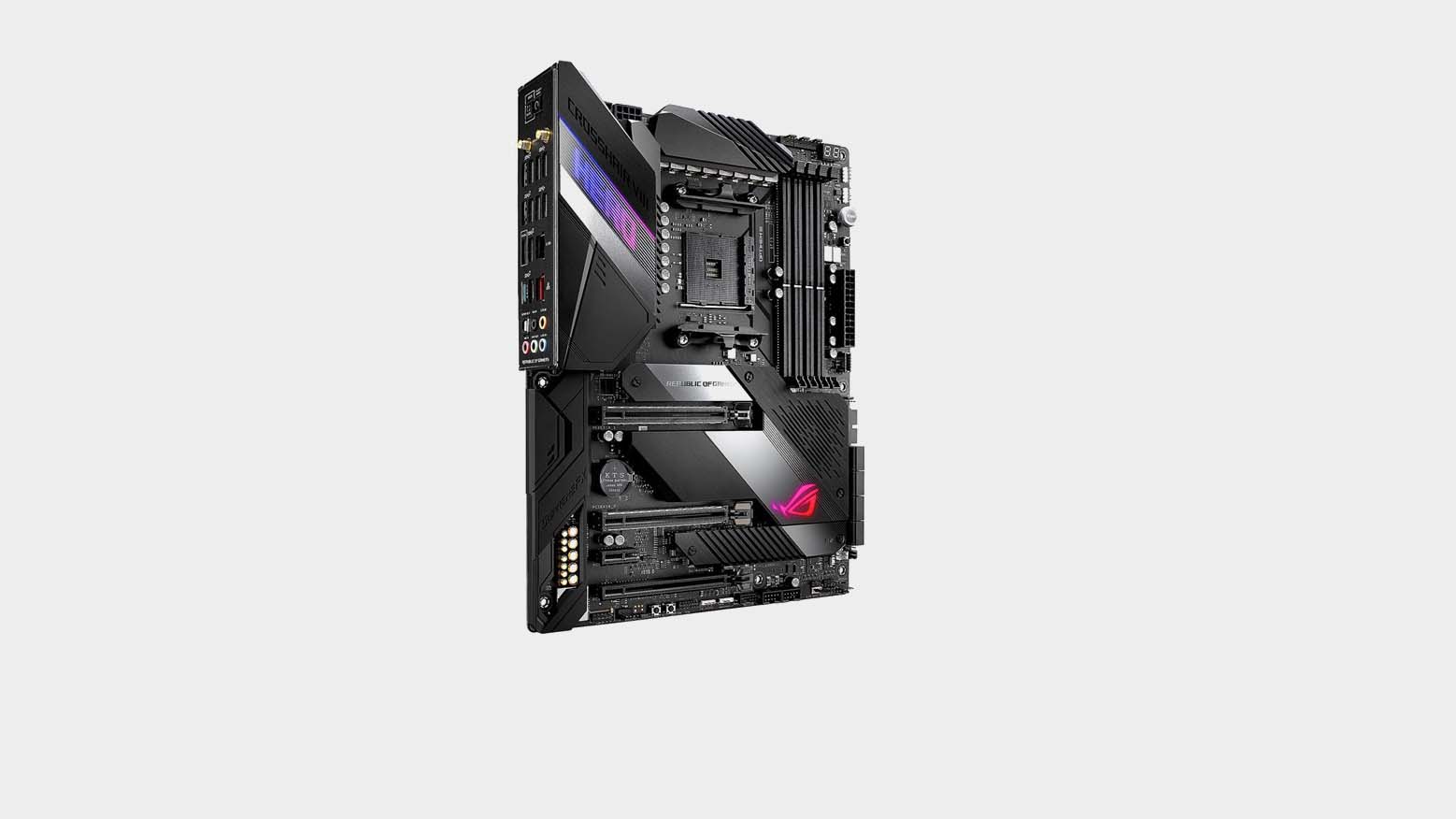
The Asus ROG Crosshair VIII Hero (Wi-Fi) is another excellent, if opulent, board for Ryzen 5000 processors. This AMD motherboard comes packed with all the trappings you'd expect, including an onboard thermal sensor, onboard power and reset buttons, and a BIOS flashback option on the rear IO panel. The board has its I/O shield pre-mounted to avoid any embarrassing mishaps during your build.
This standard ATX board can support a pair of GPUs in its PCIe ports and up to 128GB of RAM with its four DIMM slots. You also get a pair of M.2 SSDs slots. These specs are generally par for the course, however. An array of 10 USB Type-A ports, as well as a USB Type-C connector for front panel IO, provide ample support for any number of peripherals, which all help put this board a cut above its peers.
Sleek matte black and chrome finish and subdued RGB lend an air of subtlety to this particular board, and while the seamless M.2 heat shields make the Crosshair one of the cleanest looking boards on this list, it does make swapping out SSDs a bit of a pain. This isn't a glaring issue but does add an extra step whenever you're trying to upgrade your storage.
Overall, this board has tons of attractive features, but its comparatively steep price tag may draw your eye to more affordable offerings.
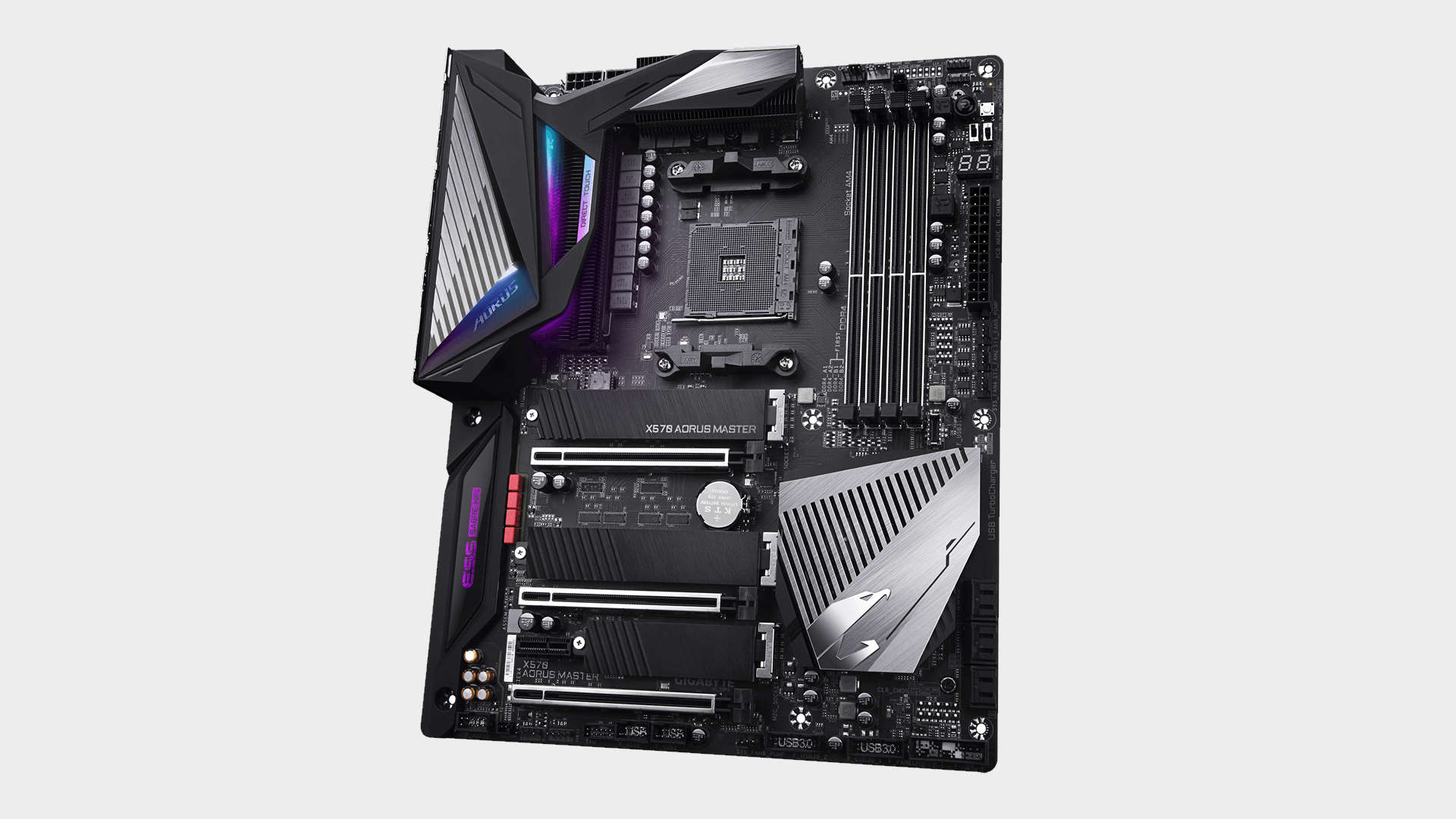
This X570 motherboard remains one of the best options for any high-end AMD build, be it Zen 2 or Zen 3. There are a few reasons for this, but the three M.2 slots, great wired and wireless networking, and expansion possibilities top the list. Yes, it's one of the more expensive options, but you really do get a lot of motherboard for your money, and it's utterly reliable too.
The 14-phase VRM design ensures your CPU is getting lots of clean power, which in turn makes this one of the best options for overclocking your Ryzen 5000 or Ryzen 3000 processor of choice. All that metal atop of the VRMs helps keep things cool, as does the massive plate that covers the rear of the board. The M.2 slots all have heat spreaders, and the expansion and memory slots are reinforced too.
The only real mark against it, other than the price, is that if you do use all three M.2 slots you only get four SATA ports to play with. Still, this is a sturdy and well-thought-out board that will serve you well.
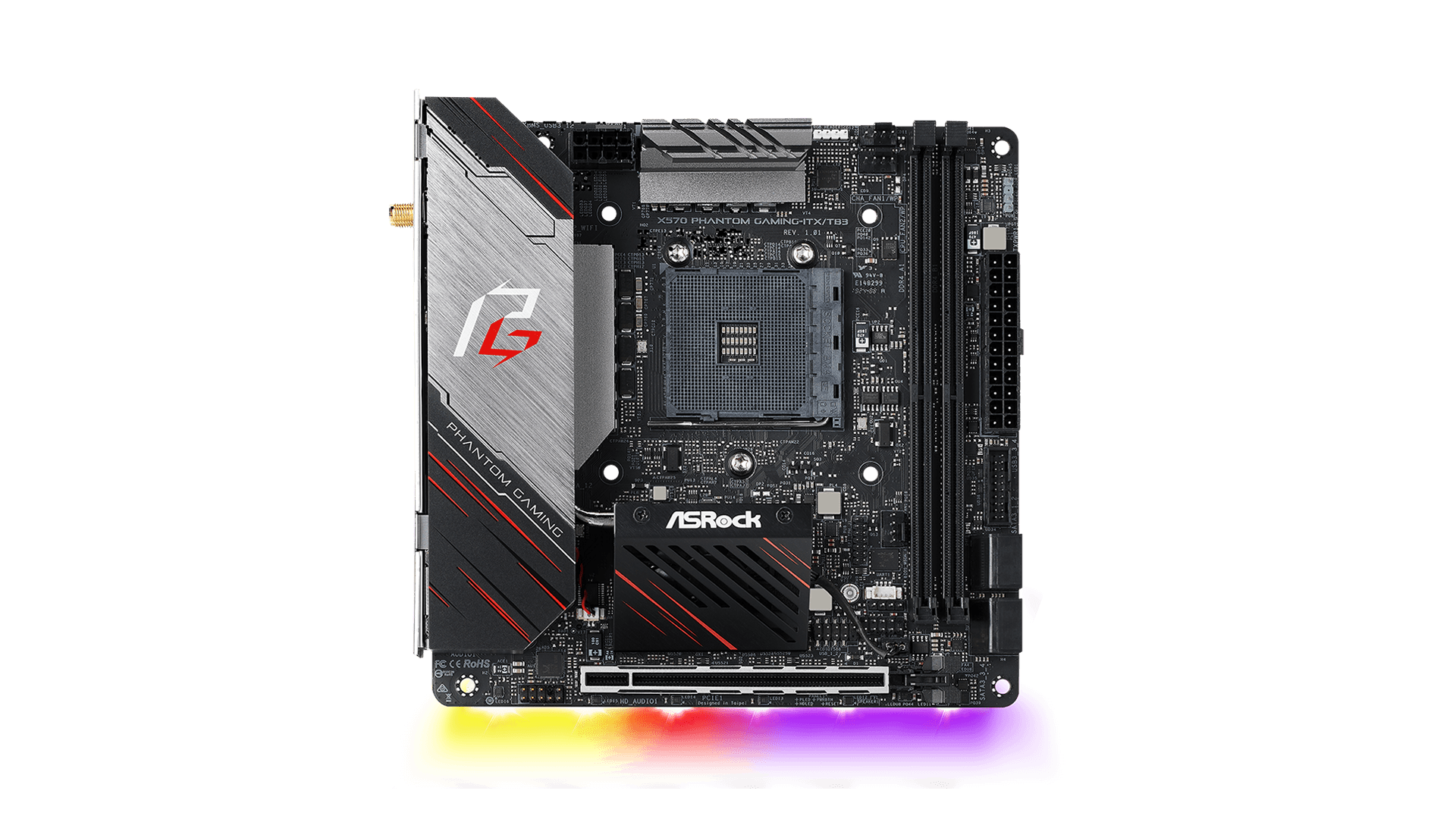
ASRock has made some great AMD Ryzen motherboards over the years, and this one packs in the latest high-end X570 chipset, forward-looking features, and serious performance. The $200+ price point might be a bit tough to swallow, but plenty of X570 motherboards sit at around that sort of level. The fact there's almost no Mini-ITX premium attached makes the Phantom Gaming-ITX/TB3 even more tempting.
It also means you can potentially create a 16-core AMD Ryzen 9 3950X or AMD Ryzen 9 5950X machine that looks about the same sort of size as an Xbox Series X.
The PCIe 4.0 support isn't the only advanced connection on offer with this wee ASRock AMD motherboard either, there's also Thunderbolt 3 connectivity from the integrated I/O shield of the back panel too. That's an impressive little added extra from what is an already impressive board.
It is worth noting that it will require an Intel-based CPU cooling bracket. In order to fit all the features into the mini-ITX form factor, ASRock didn't have space for the bulky AMD fitting. That's only an issue if you wanted to use the stock AMD coolers, but otherwise, any third-party cooler will come with Intel brackets.
Best gaming motherboards | Best SSD for gaming | Best gaming laptop
Best PC cases | Best gaming PC | Best gaming mouse
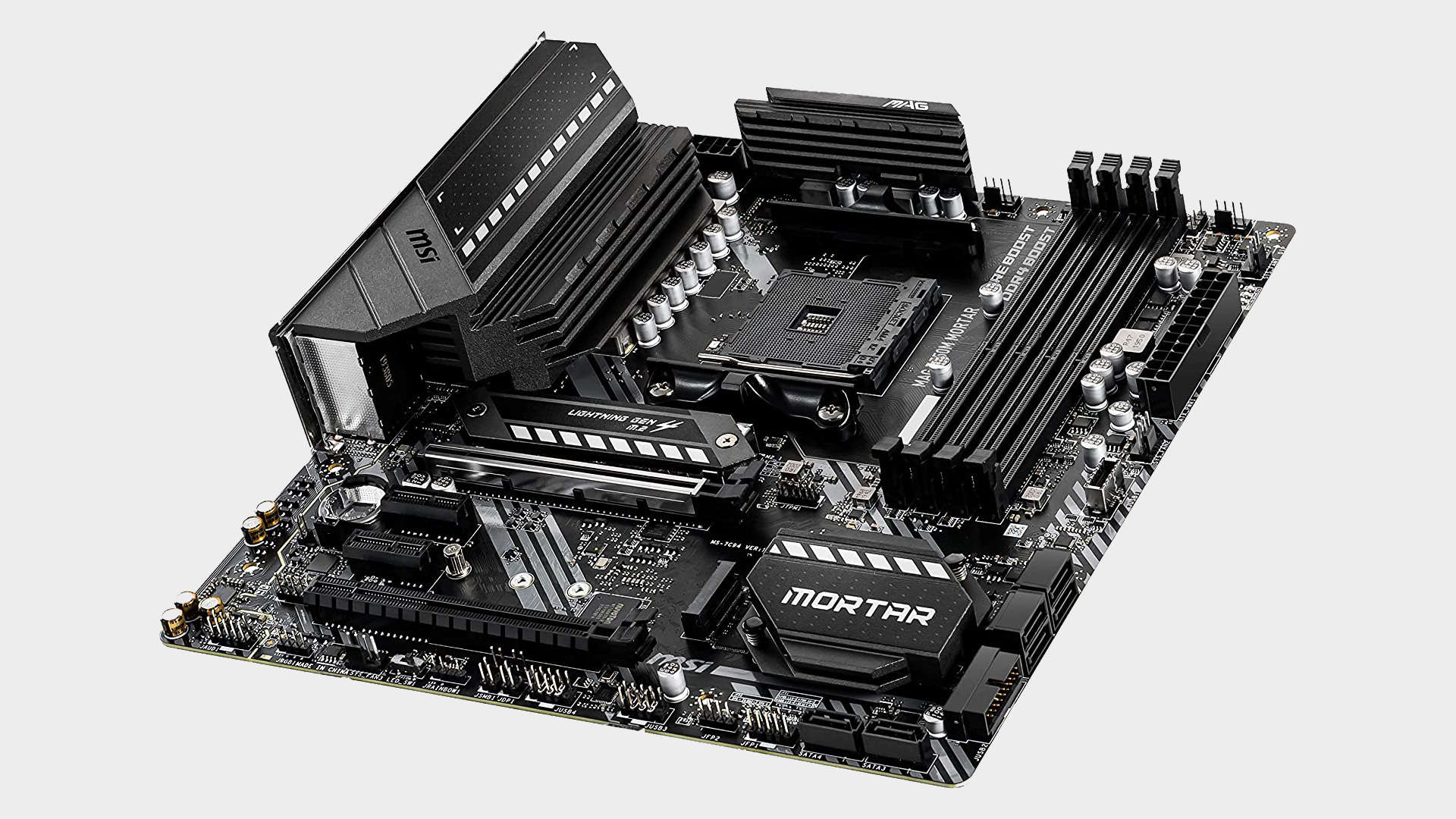
When it comes to gaming performance above all else, MSI's micro-ATX MAG B550M Mortar is your best bet for an affordable next-gen Ryzen machine. It comes in around the $160 mark, making it cheaper than a great many X570 and other B550 motherboards on the market right now.
The gaming frame rates of the MSI B550 Mortar put it above the rest of the B550 crew we've tested so far, and indeed its straight CPU performance puts it up there with some of the best X570s. That bodes well if you're looking for an affordable home for your AMD Zen 3 CPU, this B550 has a great chance to ensure it performs to its fullest stock-clocked potential without breaking the bank.
But you will be missing out on extra PCIe 4.0 M.2 and x16 graphics slots if those extras mean a lot to you. You can also opt to ditch wireless networking too, depending on whether you pick the straight Mortar or the more expensive Mortar Wi-Fi 6 version. The 8+2+1 power phase design is arguably a more unwelcome miss, however, as that results in a board that isn't going to spark any overclocking joy in your heart. But, as an affordable gaming board without OC pretensions, it's a great shout.
Read our full MSI MAG B550M Mortar review.
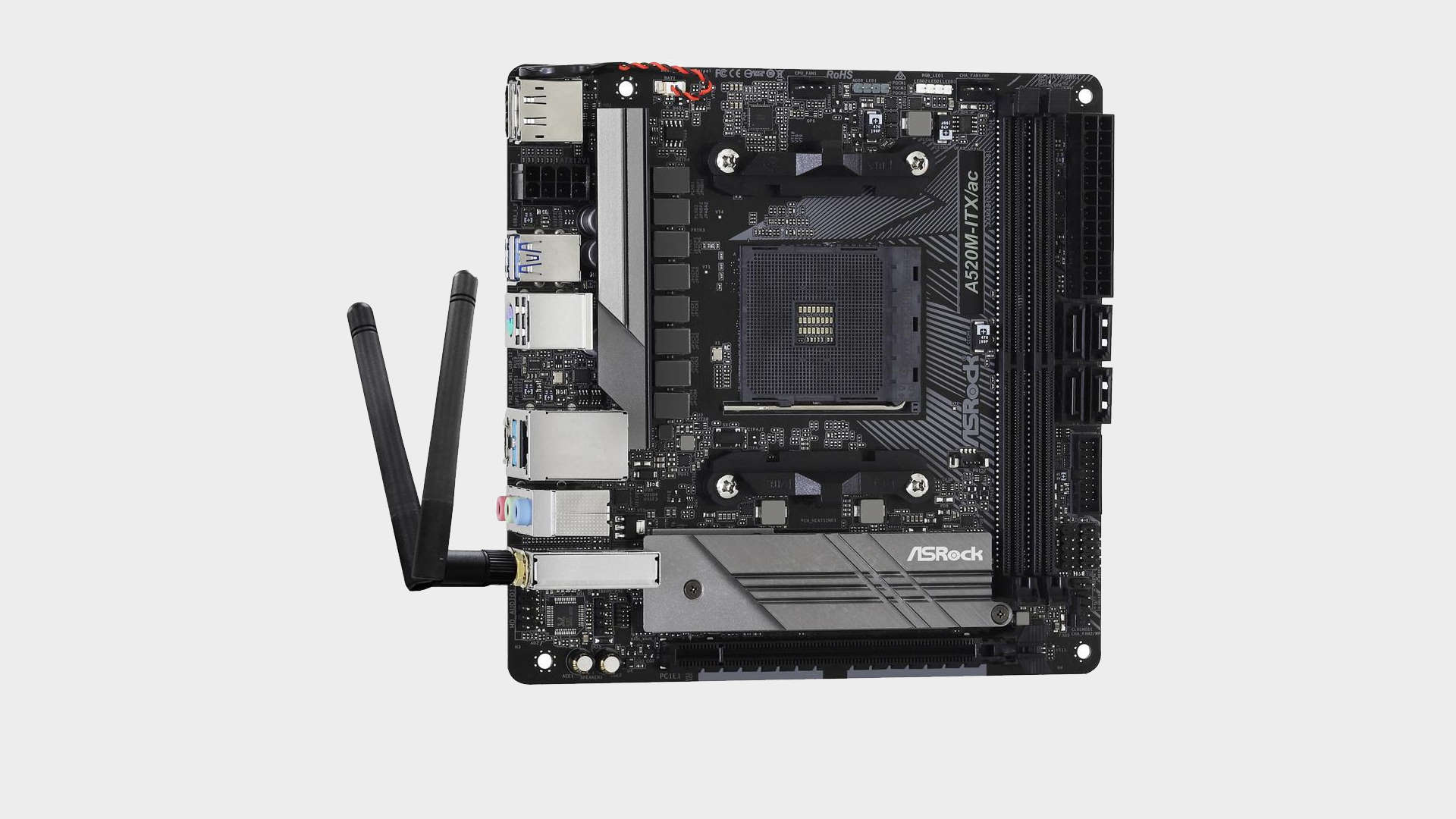
AMD's budget Ryzen motherboard chipset, the A520, has largely slipped under the radar. While B350 and B450 motherboards were mostly regarded as being entry-level, A320 was strictly seen as resolutely low-end.
The introduction of B550 motherboards, and their associated move upward in price, left a big hole in the sub-$100 market. Enter the A520. If you’re on a tighter budget and don’t care about PCIe 4.0 or the overclocking support offered by B550, then the A520 motherboards might be exactly what you need. There’s cheap and there’s really cheap, but a decent A520 board can more or less do everything a board at double the price can.
Then there’s the cherry on top which is support for AMD Ryzen 5000 series CPUs and Ryzen 4000 and 5000 APUs. Combine a Zen 3 CPU with a motherboard such as this ASRock A520M ITX/ac and you’ll be able to build an affordable and compact system that can beat a comparable Intel in any kind of workload.
The ASRock A520M's audio is a bit of a letdown, but that’s something that budget boards often compromise on. A gamer listening to compressed audio assets in-game probably won’t be any less immersed, but you can opt for an external DAC if you desire one later in life, anyways.
The little ASRock A520M ITX/ac has it where it counts and will serve you well at the heart of a budget gaming system. It benefits from the strengths of the Ryzen platform and adds some future-proofing into the mix. ITX fans looking for a capable budget AMD Ryzen option should definitely have this one on their shortlist.
Read our full ASRock A520M ITX/ac review.
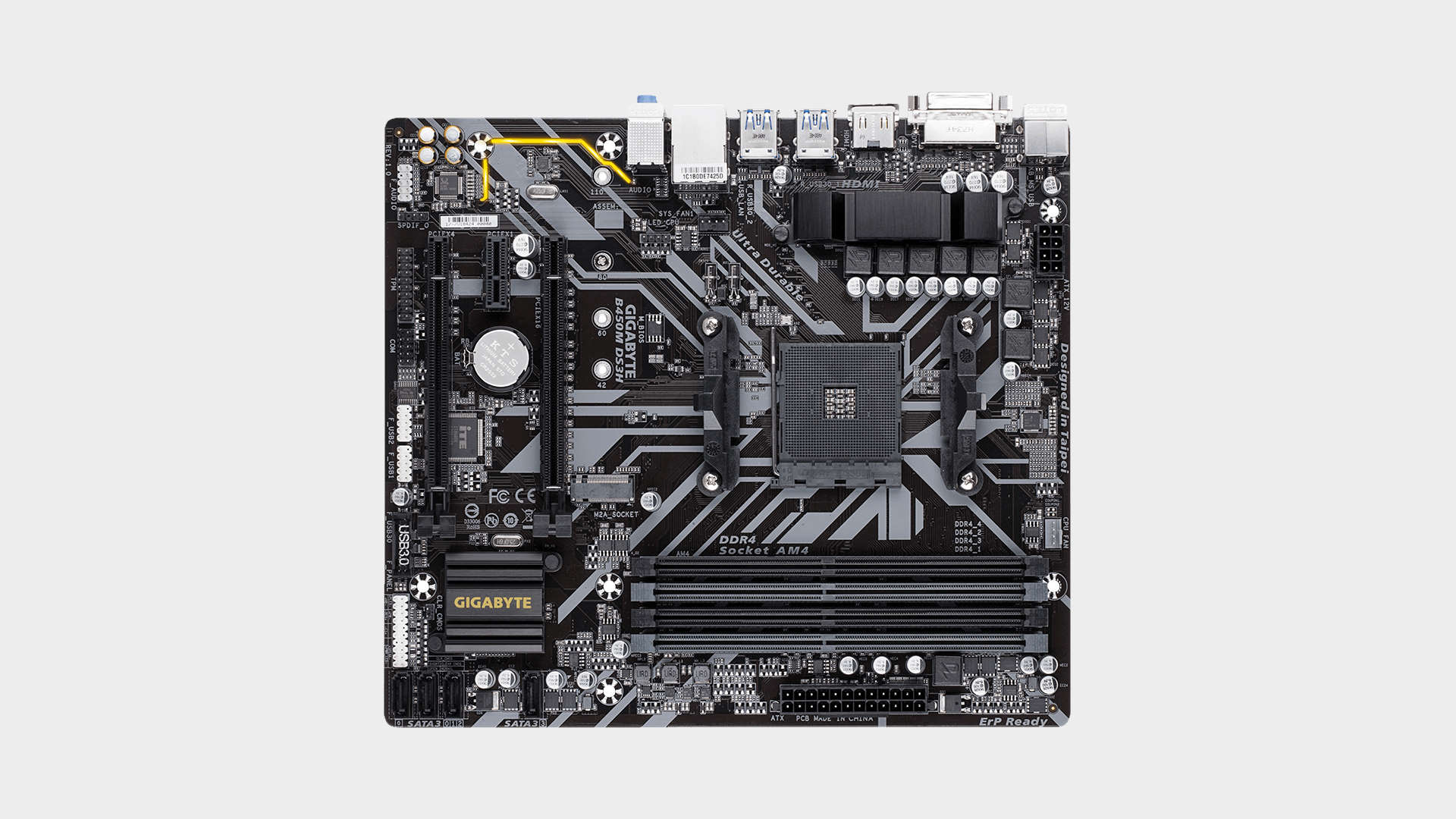

Best CPU for gaming: the top chips from Intel and AMD
Best graphics card: your perfect pixel-pusher awaits
Best SSD for gaming: get into the game ahead of the rest
If you're in the market for a B450 board at a great price that's still loaded up with features, Gigabyte's B450 DS3H is an excellent choice, and can often be had for right around the $70–$80 mark. It packs 4 DIMMs with support for up to 64 GB of RAM and two PCIe slots (though only the top lane gets a full serving of bandwidth). There's a raft of USB ports, including speedy 10Gbps USB 3.1, and supports PCIe 3.0 NVMe SSDs too.
The B450 is a perfect example of trimming away fat to provide an excellent board at the lowest possible price, something Gigabyte excels at. For an AMD build with a responsible budget, it's one of the best options available.
Best AMD motherboard FAQ
What is the best AMD motherboard chipset?
The AMD X570 is the latest motherboard chipset for Ryzen 5000-series processors and therefore has the most up to date features. It offers PCIe 4.0 support, dual-GPU configurations, and a wealth of tweaking and compatibility options. There is a newer version of this chipset starting to appear, called the X570S, which removes the need for active fan cooling on the chipset itself, but is otherwise pretty much identical.
Which socket is compatible with AMD Ryzen CPUs?
There's a simple answer for this: AM4. One socket for every AMD Ryzen processor to date. That is due to change with the release of Zen 4, but we've still got a year before that's expected to drop. AMD has only guaranteed a continued use of that socket until 2020, and that means we're in uncharted territory today.
AMD says it will only change the socket when such a change is required, at least. It says that's largely tied to the schedule of industry I/O technologies, many of which will be out of AMD's hands directly. Whether it builds out a new pin configuration and socket will depend on the features available on said platform and chip, which is how it's supposed to work.
A single socket does not necessarily mean sweeping compatibility backwards and forwards between Ryzen CPU generations, though. That's down to the chipset.
Which motherboard chipset do I need for my AMD Ryzen CPU?
The most relevant motherboards for a new CPU buyer today are those equipped with the following chipsets: X570, B550, X470, and B450. The 'X' prefix denotes the high-end motherboards, while the 'B' denotes the close-run mid-range models. There's also the 'A' prefix for the entry-level, but these come usually strapped for features and are not that much cheaper than entry-level B450 boards. Plenty of options, clearly.
The 500-series chipsets are the latest to arrive, while the 400-series is generally a little older—not always, however, as Asus is still pumping out new B450 motherboards even today. Both technically support the latest Ryzen 5000-series and Ryzen 3000-series processors, but with some features missing within those packing older parts. The most notable of these omissions is PCIe 4.0 support for increased platform bandwidth—despite rumours, only 500-series motherboards are PCIe 4.0 ready.











No comments: